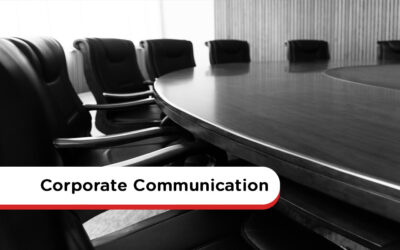Intranet Design Services
Choose from the self-build option with our support or work with one of our designers who will create a customized, fully-functioning intranet for your business, in 40 days or less, guaranteed!
The Challenge: Lack Of Time
You’ve defined your requirements and you know MyHub can deliver the outcomes you’re looking for. But do you lack the time and resources to customize your MyHub intranet site and get it launched on time?
The Solution: We Do It For You
By engaging with one of our designers, we’ll remove all of the complexity and risk by doing it all for you.
Planning For Success
Your MyHub intranet designer will lead the engagement process and ensure you’re updated on progress. The process is broken down into three key stages including:

Scope & Commercials
- Gathering requirements
- Defining launch objectives and timelines
- Developing a site plan including key pages, modules and content
- Agreeing the scope of works, pricing and terms.

Site Design
- Adding a company logo and changing site color options
- Designing and adding pages
- Adding content to pages including images, news articles, text, video and forms
- Adding folders and files to the Document Exchange
- Adding users to the site, Role Groups and Roles

Launch
- Handover and training
- Post-launch support
- Free site audit at any time
MyHub Designers, Delivering Great Outcomes
Intranet Design Articles
Corporate Communication – Examples and Best Practices
Modern corporate communication bridges the gap between leadership and employees, ensuring a unified vision across all levels of the organization. By structuring internal messaging—whether through leadership announcements, policy updates, or team feedback—companies can foster transparency, alignment, and trust.
An intranet serves as the backbone for this process, offering centralized news feeds, staff directories, document storage, forums, and calendars—all accessible across devices. These features help break down silos, simplify information access, and support two-way communication.
Successful corporate communication strategies powered by intranets yield tangible benefits: faster and more consistent messaging (even from CEOs or managers), better collaboration across departments, secure handling of sensitive data, and deeper employee engagement backed by data-driven insights. Additionally, platforms like MyHub streamline the process—enabling alerts, forums, automations, mobile access, and feedback tools—all contributing to enhanced productivity and morale.
What Is A Digital Workplace: The Ultimate Definition
The concept of a digital workplace refers to a centralized, technology-driven environment where employees can access all necessary tools, information, and services remotely—from any device or location. It builds on the traditional intranet, integrating communication platforms, content management, KPI tracking, and more into a seamless employee experience.
Organizations adopting digital workplaces report significant advantages: improved internal communication and collaboration across distributed teams, higher productivity through streamlined workflows and automation, cost savings on office overhead, and enhanced employee satisfaction thanks to flexibility and inclusivity. The shift reflects evolving workforce expectations and technological advances accelerated by the pandemic .
Beyond immediate efficiencies, digital workplaces foster long-term cultural benefits like agility, innovation, and knowledge sharing. Centralized platforms simplify onboarding, training, and remote collaboration while empowering employees with intuitive self-service capabilities. Successfully implementing them requires choosing the right tools, securing buy-in, and maintaining proactive governance and support.
Ethics In The Workplace: All You Need To Know
In today’s business landscape, workplace ethics have become a cornerstone of organizational success. The article delves into the concept of workplace ethics, defining them as the moral guidelines that shape a company’s culture and influence employee behavior. These ethics are molded by various factors, including legislation, industry regulations, and societal expectations, emphasizing values like fairness, accountability, and integrity.
The blog highlights practical examples of ethical practices within organizations, such as compliance with health and safety regulations, anti-discrimination policies, anti-harassment procedures, and guidelines on corporate gifts and fraud prevention. It also points out that many companies engage in ethical sourcing, implement green workplace practices, and contribute to charitable causes, even if these efforts aren’t formally recognized or labeled as ethical initiatives.
Emphasizing the significance of ethics, the article notes that organizations with strong ethical foundations benefit from motivated workforces, increased productivity, and enhanced reputations. Employees in such environments feel respected and aligned with the company’s purpose, leading to superior customer service and smoother operations. Ultimately, fostering a culture of ethics not only boosts morale but also contributes to the organization’s bottom line.
15 Top Tips To Improve Information Cascade In Your Organization
Effective communication is the backbone of any successful organization. The concept of information cascade refers to the structured dissemination of critical information from top-level management down through various levels of the organization. This process ensures that all employees receive consistent and accurate messages, fostering trust and alignment across teams.
The blog post outlines 15 practical tips to enhance the information cascade process. These include developing a clear communication plan, identifying the cascade process, utilizing multiple communication channels, and ensuring managers are well-equipped to convey messages effectively. Emphasis is placed on the role of line managers, who serve as vital links between leadership and frontline employees, interpreting and relaying information in a relatable manner.
By implementing these strategies, organizations can minimize misunderstandings, reduce misinformation, and promote a culture of transparency. A well-executed information cascade not only keeps employees informed but also engages them in the organization’s mission and goals, leading to improved morale and productivity.
5 Employee Life Cycle Stages And Why They Matter
In today’s competitive job market, understanding the employee life cycle is crucial for organizations aiming to attract and retain top talent. The life cycle encompasses five stages: Attraction, Onboarding, Development, Retention, and Exit. Each phase plays a significant role in shaping the employee experience and, by extension, the overall health of the organization.
The Attraction stage involves building a strong employer brand to draw in potential candidates. Onboarding ensures new hires are integrated smoothly, setting the tone for their journey within the company. Development focuses on providing growth opportunities, while Retention emphasizes keeping employees engaged and satisfied. Finally, the Exit stage, when managed effectively, can offer valuable insights for organizational improvement.
Optimizing each stage of the employee life cycle not only enhances employee satisfaction but also contributes to better team cohesion and customer experiences. By proactively managing these phases, organizations can foster a more engaged workforce, leading to increased productivity and long-term success.
Employee Profiles: How To Improve Your Employer Brand
In today’s competitive job market, a strong employer brand is crucial for attracting and retaining top talent. The blog post emphasizes the role of employee profiles in showcasing company culture and humanizing the workplace. By highlighting individual stories and achievements, organizations can create a more relatable and appealing image to potential candidates.
Employee profiles serve as more than just introductions; they are tools for fostering internal connections and collaboration. By providing insights into colleagues’ backgrounds, skills, and interests, these profiles break down silos and encourage cross-departmental communication. This interconnectedness leads to a more cohesive and productive work environment.
Implementing comprehensive employee profiles also supports remote and hybrid work models by maintaining a sense of community and visibility. The blog provides practical tips for creating effective profiles, such as including personal anecdotes, professional milestones, and multimedia elements. By investing in well-crafted employee profiles, companies can enhance engagement, collaboration, and their overall employer brand.







